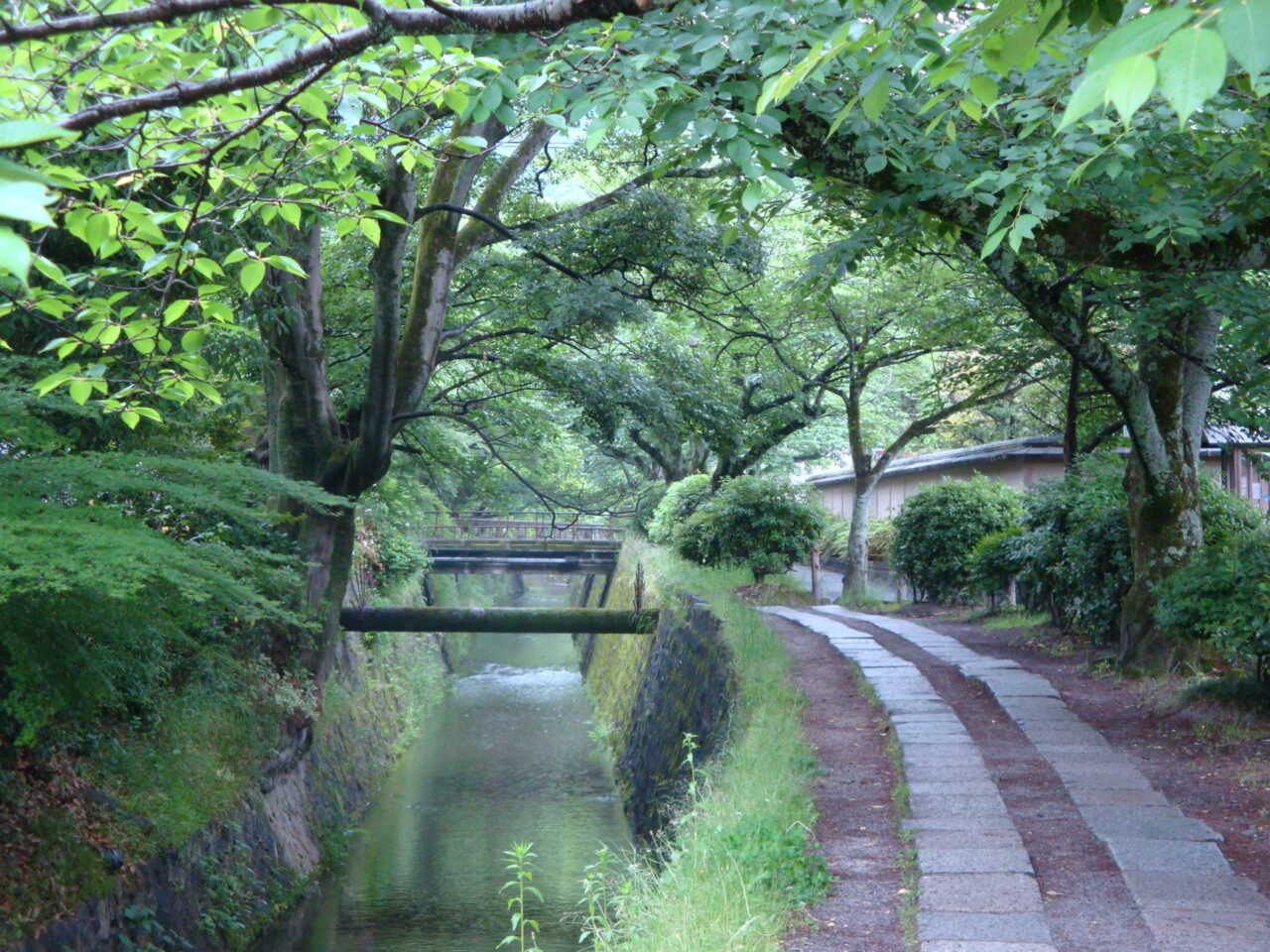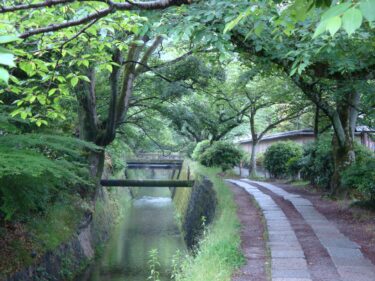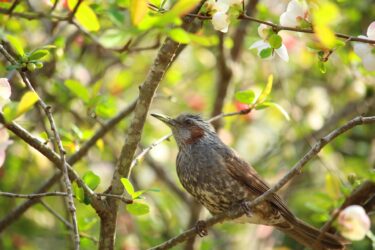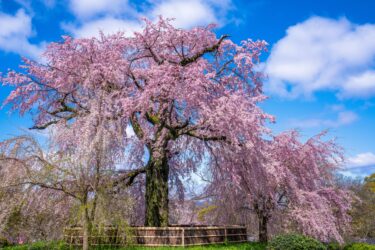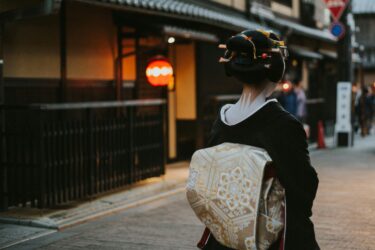Kyoto is a city of contrasts: ancient temples tucked between modern streets, peaceful gardens just steps from busy intersections, and quiet residential paths that lead to some of Japan’s most celebrated cultural landmarks. One of the best ways to experience this unique side of Kyoto is by walking the Philosopher’s Path, a tranquil walkway that winds alongside a narrow canal in the northern part of Higashiyama.
This pleasant stone path stretches for about two kilometers, connecting the famous Ginkaku-ji Temple (the Silver Pavilion) in the north with the sprawling Nanzen-ji Temple complex in the south. It’s a 30 minute route that invites you to appreciate the quiet rhythm of the city, and an atmosphere of calm that many visitors find is well worth it.
Why “Philosopher’s” Path?

The Philosopher’s Path gets its name from Nishida Kitaro, one of Japan’s most influential modern philosophers. Nishida, who taught at Kyoto University in the early 20th century, was known to walk this very path daily for contemplation. While the route itself wasn’t named after him until decades later, his quiet walks gave the path its reputation as a place for reflection and introspection.
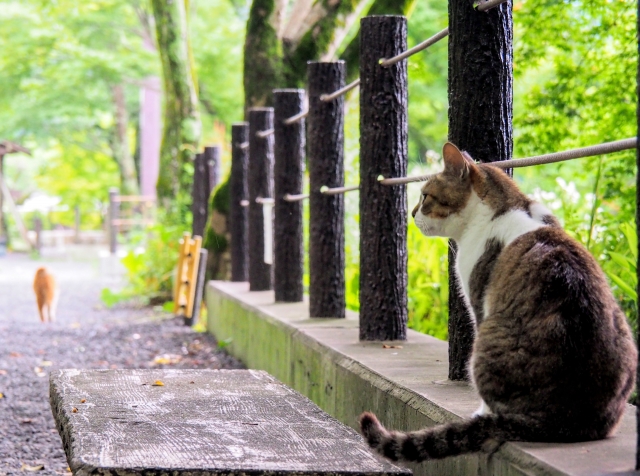
Even if you’ve never read Nishida’s work, it’s easy to understand why he chose this particular stretch of Kyoto for his walks. The quiet path runs alongside a gentle canal lined with cherry trees, passes by several temples and shrines, and winds through quiet residential neighborhoods. It feels worlds away from the crowds of downtown Kyoto, even though it’s not far from the city center.
What You’ll See Along the Way
You can of course simply choose to walk the path itself, but there are some beautiful stopping points along the way if you choose to visit them, whether you walk the path north-south or south-north.
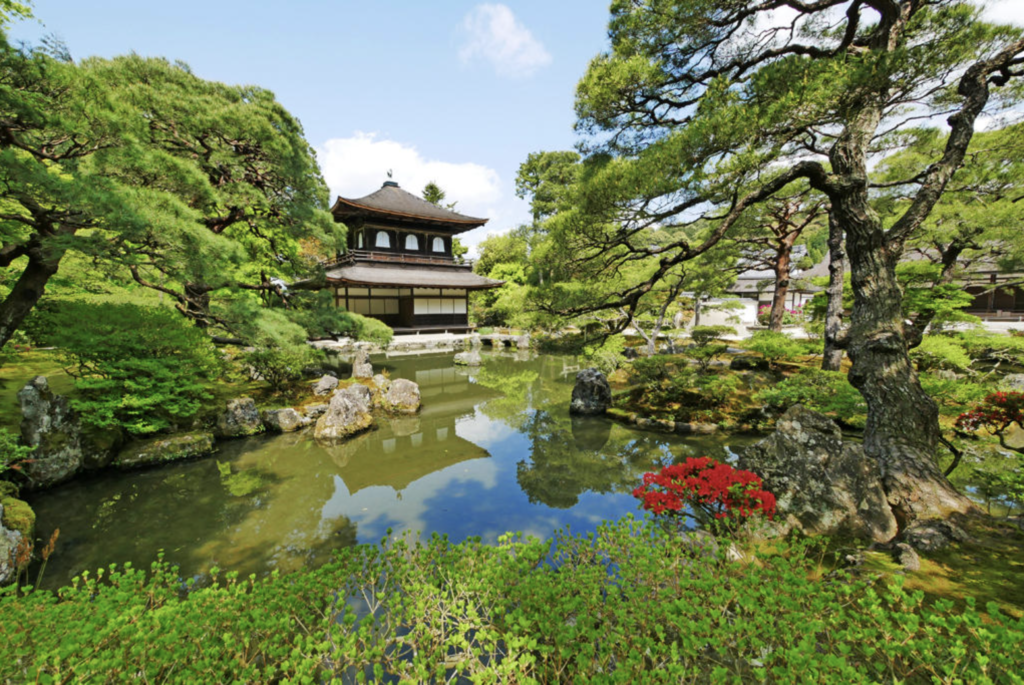
Most people start their walk at Ginkaku-ji, a Zen temple often referred to as the Silver Pavilion. While it was never actually coated in silver like its more famous counterpart, Kinkaku-ji Temple (the Golden Pavilion), Ginkaku-ji has its own charm. Its moss garden and sand garden are both striking, and the view from the hill at the back of the temple gives you a peaceful look over the surrounding area. From there, the Philosopher’s Path begins just a short walk south of the temple gate.
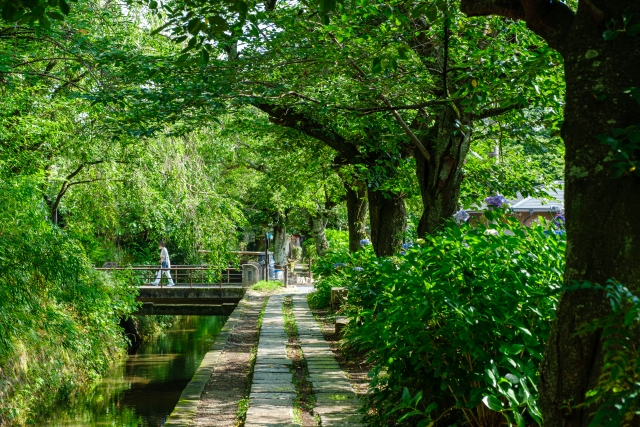
The path itself is simple but beautiful. The narrow canal it follows was originally built as part of a waterway system in the Meiji period (1868-1912), and today it serves more as a scenic landmark than a piece of infrastructure. Stone paving lines the canal, and cherry trees hang over it in graceful arcs, especially dramatic in early April when the blossoms are in full bloom. In autumn, those same trees blaze red and orange with the changing leaves.
As you walk, you’ll pass a mix of small temples, shrines, cafés, and shops. One popular stop is Honen-in, a small temple known for its thatched gate and tranquil forest-like setting.
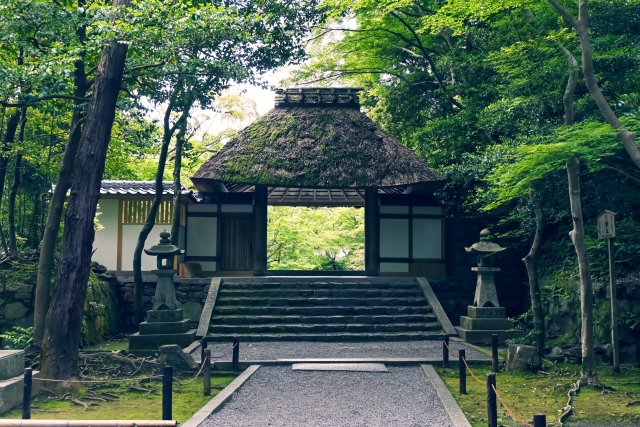
It’s slightly off the main path, which means many people miss it—but those who do visit often cite it as one of their favorite hidden spots in Kyoto. A little further along is Eikan-do, a larger temple famous for its autumn foliage and hillside location. Eikan-do Temple is worth a stop even outside of peak season thanks to its beautiful main hall and serene atmosphere.

Eventually, you’ll reach Nanzen-ji, a major Zen temple that marks the southern end of the path. Nanzen-ji is a complex that includes several sub-temples, as well as a large Sanmon gate and an aqueduct built in the 19th century. The aqueduct may seem out of place at first, but its red brick design has become one of the temple’s most iconic features. Visitors often enjoy walking along the top or underneath it to take photos and explore the quiet gardens nearby.
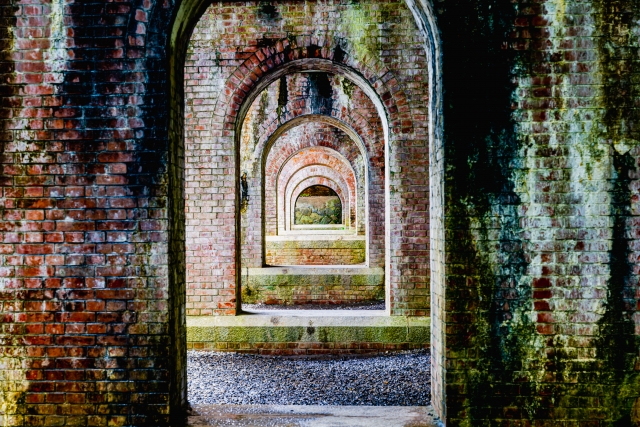
Best Times to Visit
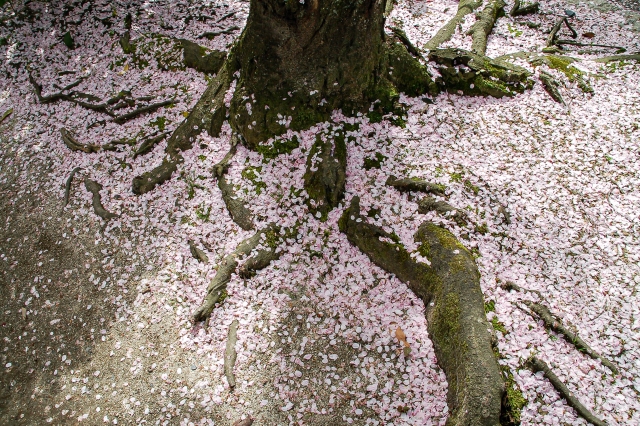
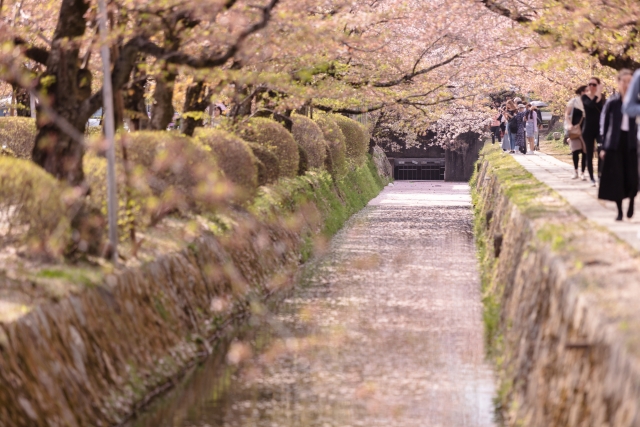
While the Philosopher’s Path is a pleasant walk at any time of year, it’s especially popular in spring during Kyoto’s cherry blossom season. From late March to early April, the entire path becomes a tunnel of pale pink petals, drawing large numbers of visitors. It can get crowded during peak bloom, particularly around midday and on weekends, so visiting early in the morning or later in the afternoon might give you a more peaceful experience on the path.
Autumn is another excellent time to visit. From mid- to late November, the maple trees along the path and in nearby temples like Eikan-dō and Nanzen-ji put on a vibrant display of red and gold leaves. The cooler weather also makes walking more comfortable, and the light in late autumn tends to be soft and warm, adding to the beauty of the surroundings.
In summer, the path is quieter, shaded by lush greenery, and often accompanied by the gentle sound of cicadas. Winter is the least crowded season, but if you’re lucky enough to catch a snowfall, the Philosopher’s Path takes on a quiet, almost surreal quality.
How to Get There
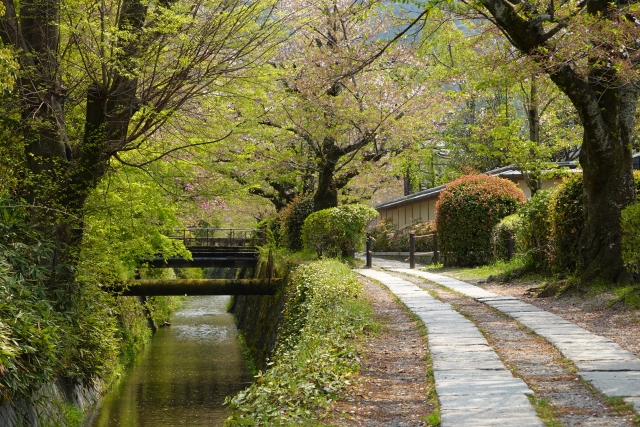
Getting to the Philosopher’s Path is relatively easy by public transport. If you want to start walking from Ginkaku-ji Temple, the most straightforward route is to take a city bus from Kyoto Station to the Ginkaku-ji-michi bus stop. From there, it’s just shy of a 10-minute walk to the temple and the beginning of the path.
If you prefer to start from the Nanzen-ji Temple side, you can take the subway to Keage Station, which is a short walk from Nanzen-ji. This southern end of the path gives you a chance to walk north and finish your journey at Ginkaku-ji Temple, and maybe even reward yourself with some dessert or a light meal at one of several cafés not far from the temple entrance.
Because the area is relatively compact, many visitors choose to combine a walk along the Philosopher’s Path with other nearby attractions. Heian-jingu Shrine, the Kyoto City Museum of Art, and the Kyoto Zoo are all within walking distance of Nanzen-ji Temple. If you’re feeling energetic, you can even continue walking into central Higashiyama, where you’ll find more famous spots like Kiyomizu-dera Temple and Yasaka Shrine.
Tips for a Smooth Walk
The walk along the Philosopher’s Path is mostly flat and paved with stone, so you won’t need hiking gear, but wearing comfortable walking shoes is a good idea. The entire route takes about 30 to 45 minutes to walk without stopping, but if you include temple visits and other stops, you might take 1.5 to 2 hours.
There are a few cafés, bakeries, and restaurants near the path along the way, especially close to the northern and southern ends of the path. Some offer light lunches or Japanese sweets, and they’re a good option if you want to take a break and enjoy the scenery.
One thing to keep in mind is that this is a residential area. While tourists are generally welcome (the path is one of Kyoto’s most well known), it’s important to be respectful: avoid speaking loudly or shouting, don’t enter private property, and be mindful when taking photos near local homes.
It’s also worth noting that the Philosopher’s Path is not very well-lit at night. If you plan to visit late in the day, make sure to finish your walk before it gets dark, or carry a small flashlight if needed.
A Peaceful Side of Kyoto
Kyoto is full of major sightseeing spots that deserve attention, but the Philosopher’s Path is not a grand temple or vista. It’s a quiet, scenic walk that’s perfect for absorbing the slower pace of this historic city.
A stroll along the Philosopher’s Path is one of the simplest and most rewarding ways to connect with what makes Kyoto special.

